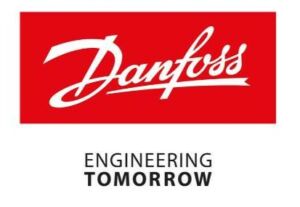Solutions to the Challenge of Net Zero
As a leading manufacturer of world-class heating products, Danfoss has compiled an informative whitepaper to analyse the challenge of decarbonising heat and to explore solutions in the journey to Net Zero by 2050. Gareth Ash, Marketing Communications Manager at Danfoss, looks at some of these solutions, from measures that can be implemented now to future technologies.
Achieving Net Zero is clearly a massive challenge for the heat supply chain as it is estimated that around 90% of the energy for this sector comes from fossil fuels. Given the size and complexity of the heating sector it looks likely that we will see a mix of sustainable energy solutions operating within the market for some time. So what are the main options?
Hydrogen: Hydrogen-compatible domestic boilers could offer a relatively easy and not overly expensive replacement for the millions of existing gas boilers in people’s homes.
There are two types of hydrogen production being explored Blue hydrogen which can be produced from natural gas and the CO2 emissions and other polluting elements captured and removed and Green Hydrogen which is produced using renewable electricity.
Heat pumps: Although heat pumps still have some impact on the environment as they need electricity to run, an Air Source Heat Pump (ASHP) will typically produce around 3kW thermal energy for every 1kW of electrical energy consumed – and there is the potential to use solar thermal technology and solar PV arrays. ASHP are generally considered easier and less costly to install than ground source versions, particularly in an existing property, because they do not use pipes buried in the ground outside to extract heat. The heat an ASHP absorbs from the outside air can be used to heat radiators, underfloor heating systems, or warm air convectors and hot water in the home.
Direct electric heat: This is a well-established technology with no emissions at the point of use but can be expensive to run. However, it may be an option where the heat requirement is relatively low, such as in small, well-insulated homes where demand on the grid and running costs would be less of an issue.
Electrical underfloor heating: Electrical floor heating, such as the DEVI system from Danfoss, combined with a renewable energy source like solar power cells can provide an environmentally-friendly heating solution, especially for new homes with a high degree of insulation and low energy consumption. Electric underfloor heating is also ideally suited to the lower temperatures produced by sustainable energy systems.
Heat Networks: Already at the heart of low carbon heating in towns and cities across Europe these water-based distribution networks are proven to deliver a high efficiency energy solution that can be ‘plugged’ into all types of renewable, sustainable energy sources. The trend, particularly in Scandinavia, is now moving towards smaller energy networks that can be connected to a larger ‘out-of-town’ network at a later date. For those countries currently lagging behind in the district energy market, such as the UK, this incremental approach could be the way forward.
Intelligent control and hydronic balance: Whatever sustainable solutions are adopted high efficiency heating controls will continue to play an important role in optimising overall system efficiency. Even in a Net Zero world homeowners will still need to control when their heating comes on and be able to turn the temperature up or down to meet their individual needs. Independent tests have demonstrated the energy-saving benefits of electronic heating controls, such as fully programmable room thermostats and thermostatic radiator valves, as well as the importance of proper hydronic balance. And now Danfoss is taking heating control and optimisation to the next level using Artificial Intelligence with Leanheat software, which can be used to learn a building’s thermodynamic behaviour and optimally control the HVAC system.
Heat as a Service: Another solution that could support heat decarbonisation is the concept of Heat as a Service whereby customers buy warm hours instead of kilowatt hours of energy from an Energy Service Provider (ESP). In exchange for a fixed price the ESP provides them with a home heated to the temperature they want at the times they require it. Once a service provider understands the consumer’s heating needs they can help them select the best low carbon solution for their home.
The future
Now the journey to Net Zero has started it’s clear that business as usual is not an option. We must continue the journey regardless of the inevitable bumps along the way if we are to deliver a cleaner, greener heating future. At Danfoss we believe the most cost-efficient solution to decarbonise our economies is energy efficiency and even small actions on different fronts by installers and the wider industry, such as optimising the efficiency of existing heating systems through better balance and control, can help us move in the right direction.
To view the Danfoss whitepaper The Challenge of Net Zero for the Heating Sector simply click on the link: https://assets.danfoss.com/documents/57304/BE348112154914en-GB0101.pdf?_ga=2.201430488.817487491.1620507571-342799606.1604990510

